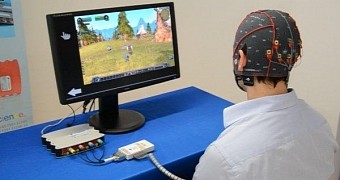Mice, keyboards, and touchscreens are so yesterday if we are to judge from a new Microsoft patent describing a technology that could be used to control a PC using just the mind.
As Star Trek-ish as it may sound, Microsoft says in the patent called “Changing an application state using neurological data” that this is indeed possible, as long as the PC itself is connected to an EEG (electroencephalography) sensor in charge of reading the electrical signals generated by the brain.
With input sent by the brain and which is then collected by the EGG sensor, interpreted, and sent to the PC, the user should theoretically be able to work on a computer just like they’d do it with another input method.
Microsoft lists a series of actions that could be performed using only the mind, and these include moving files from one location to another and adjusting sound (via Neowin):
“Operations may include object move operations, build operations, edit operations, animation or actuation operations, data input or output operations, display operations, audio operations, character/object movement or control operations, menu operations, navigation operations, processing operations, or other operations performable within the application to modulate input or output, settings, responses (e.g., visual, audio, and/or mechanical responses), and the like.”
Still a patent
While at first glance it might seem an actually simple system, it’s not, but Microsoft says that its complexity could allow substantial improvements in future implementations that would make it possible even to distinguish brain signals sent for other “commands,” like moving the body, from those meant to control the computer.
“The application state is automatically changed to align with the intended operation, as determined by received neurological user intent data, so that the intended operation is performed. Some embodiments relate to a computer system creating or updating a state machine, through a training process, to change the state of an application according to detected neurological data,” the patent reads.
It goes without saying that this technology is still in patent stage, and as usual, this is no guarantee it would ever enter production. And even if it does, don’t expect this type of system to become available anytime soon.

 14 DAY TRIAL //
14 DAY TRIAL //